Die Wiesenburg
Asylum for artists and bats
The men’s dormitories were destroyed by two fire-bombs toward the end of the war, which left bullet holes and grenade-splinter scars on the surviving red-brick walls. Some of the fiercest fighting took place here in the final days, the last desperate attempt to stem the unstoppable tide.
“There are masses of bullet holes in these walls because this was one of the last lines of fighting at the end of the war. The railway line was easy to defend. There was Hitler Youth, police, home front, old retired front soldiers – anyone they could find,” Heather Allen of Werkhalle Wiesenburg told Abandoned Berlin.
No other trace of the combatants remains, nothing but jagged walls and empty window-frames indicating where glass once needed cleaning.
Ceilings made of sky and smashed timber do little to keep the memories from escaping. Plants and trees have made themselves at home – nature’s squatters – while colonies of bats have put the brakes on officialdom’s latest attempt to take over.
But we’ll come back to our winged heroes later. ‘Tis best to start good yarns at their beginnings. This one starts around the middle of the 19th century, when Berlin got notions and suddenly decided to become a metropolis.
“For the most part the metropolis was allowed to expand haphazardly, driven by speculators’ greed,” Der Spiegel writes, as if anything has changed in the meantime.
Buildings were horrendously overcrowded and of course many were left behind with nowhere to shelter at all – the homeless.
Around the time Emma Lazarus was penning her call to “huddled masses yearning to breathe free,” Berlin was full of them, the bedraggled and desperate. Forced prostitution, thievery, misery and squalor was their lot.
The Berliner Asyl-Verein für Obdachlose was founded in 1868 by a group of people who wanted to do more for these downtrodden people than existing organizations were doing at the time. One of the main instigators, Berta Hirsch-Neumann, was particularly concerned for the city’s homeless women and children.
The Verein had some prominent backers including famous industrialist Albert Borsig, heir to his father’s locomotive-making empire; Carl Bolle, founder of the Norddeutsche Eiswerke, which made ice at the abandoned Eisfabrik on Köpenicker Straße; liberal politician Heinrich Kochhann, who championed urban green areas and the hospital in Friedrichshain; the theologian Friedrich Gustav Lisco; the renowned physician Rudolf Virchow; SPD co-chairman Paul Singer; and police chief Lothar von Wurmb, among others.
They didn’t delay before opening a woman’s shelter in a former artillery workshop in Mitte, and followed up five years later with one for men in what was called Königstadt (now Büschingstraße 4 in Friedrichshain).
The lion’s share of donations came from Jewish benefactors. An appeal for contributions in the Vossischen Zeitung in October 1893 prompted anti-Semitic responses to the newspaper.
In contrast to other shelters in the city, those operated by the Verein did not require their guests to repay their charity with labor, nor were they forced to take part in religious services. The Verein’s guests were also granted anonymity for up to four days a month and the police were not allowed enter the shelters.
But of course the initial facilities weren’t nearly enough, nor were the neighbors too happy having the city’s miserable souls on their doorsteps, so the Verein pushed for another purpose-built facility at Wiesenstraße in Wedding, made possible thanks to a large donation from Moritz Gerson, a doctor.
The new shelter would become known through popular parlance as “Die Wiesenburg” after it opened in December 1896 with facilities for 700 men.
Construction on the 12,000-square meter site to plans from architects Georg Toebelmann and Otto Schnock was completed in one year by 400 workers.
“It was built in a year because that was one of the conditions when the Verein bought the land from the senate,” Allen said. “They said, ‘You have to build this in a year, otherwise we take it back.’ I think it was because of the urgency for providing shelter for the homeless.”
Bordered on one side by the Panke and by rail-tracks on another, the shelter had a 50-meter entrance from Wiesenstraße to get the queues of arrivals away from the outside street as quickly as possible.
The Wiesenburg was the most progressive shelter in Germany at the time. It produced its own electricity and had its own water supply, central heating and air conditioning.
“There was no smoking. Nobody who was drunk was allowed in. Anyone with an infectious disease or who was clearly ill couldn’t come in, because of the danger of spreading infection,” Allen said. “There were 10 dormitories catering for 70 men each, and they had this modern system of heating and circulation of air. The air was changed every 15 minutes because as you can imagine, 70 people living on the streets suddenly in one room…”
Guests were able to shower/bathe in warm water and to have their clothes washed, disinfected and deloused. Toebelmann and Virchow, sticklers for hygiene, made sure there was running water in the washrooms.
The terrazzo floors were easy to clean, and almost all the rooms had electric light. There was even a library.
The water tower had a well 100 meters below, “so the water would be pumped up and filtered down through shingle to purify it. That was then heated, not only for the warm water for the baths and showers, but it also provided heating through warm-air shafts which went up into the dormitories,” Allen said.
The shelter was expanded in 1907 with facilities for 400 women and another 182 men. Apart from homeless, the Wiesenburg also took in migrant workers, harvest workers and domestic servants.
It was providing around 400,000 overnight stays a year at this time. Guests were provided with soup and bread in the evenings, and coffee and a Schrippe (bread roll) in the mornings.
“Then they’d have to leave, at 6 in the summer and 7 in the winter,” Allen said.
This was the Wiesenburg’s heyday and activists and writers such as Kurt Tucholsky, Carl von Ossietzky, Erich Kästner and Hans Fallada apparently stayed, either for reasons of temporary need or inspiration for their writings.
Before he died in 1986, Friedrich Draheim, a former cook during its shelter days, used to tell the story that Rosa Luxemburg found refuge at the Wiesenburg once when the police were looking for her.
Fallada’s ‘Ein Mann Will Nach Oben’ features Rieke Busch, a local child, who describes the Wiesenburg as a place “where the tramps and vagabonds sleep when they’ve nowhere else to stay.” („Wo die Penna und die Stroma schlafen, wenn se sonst keene Bleibe haben.“)
Tucholsky’s ‘Asyl für Obdachlose’ was surely inspired by the Wiesenburg.
After reading ‘Blood Brothers’ by Ernst Haffner, it’s hard not to believe he stayed here, too. Unfortunately, his story remains a bit of a mystery.
The police were kept out until 1910 and I suppose that’s when the downward slide began.
The First World War saw part of the Wiesenburg used for military purposes, while it was also used for storing potatoes, and by the time it ended, the donation-dependent Verein was in financial difficulties.
It managed to get going again in 1926, when the homeless shelter reopened, but only with help from the state, which insisted on applying the same rules as the public shelters, thus ending visitors’ anonymity and the Verein’s independence. The state ceased its funding anyway in 1931 and that was the end of the Wiesenburg as a homeless shelter.
It was used for various nefarious activities after that, especially after the Nazis gained power in 1933. Carburetors for motorbikes and airplanes were made on the site, and a dye company produced Nazi flags for the 1936 Olympics. The vats it used are still in the ruins of the former bathing rooms.
Forced labor was apparently used to produce bombs at the Wiesenburg during the Second World War, which returned the favor with other bombs that destroyed the men’s shelter and large areas of the washrooms. The women’s shelter and administrative building survived.
Fritz Lang shot scenes for his 1931 film ‘M’ at the Wiesenburg, and other filmmakers followed in his footsteps, albeit much later:
Herbert Ballmann with ‘Ein Mann Will Nach Oben’ in 1977, Volker Schlöndorff with ‘The Tin Drum’ in 1979, Wolf Gremm with ‘Fabian’ in 1980 and Rainer Werner Fassbinder with ‘Lili Marleen’ in 1981.
After the war, surviving staff members stayed and the still-standing parts of the Wiesenburg also became home to some bombed-out families and a few small companies.
“The Dumkow family took over the running of the Verein after the war. It still existed although there were so many papers and things lost during the war,” Allen said. “They took over the administration of the Gelände (site) from 1961. They’ve been here since then.”
But a dispute over ownership of the site was never fully settled. Plans to build high-rise flats fell through in the 1980s, when artists, artisans and small businesses moved in and repaired surviving rooms for their own purposes.
Then a court decision ruled the site belonged to the state, which transferred ownership to Degewo on April Fool’s Day 2014.
The state-owned housing company informed tenants the following year that the buildings were unsafe and that they’d have to leave. Of course, this didn’t go down well at all, and the public outcry forced Degewo to reconsider.
Now the plan is build around 100 apartments in the Wiesenburg’s “garden” – where the men’s shelter used to be – while the existing structures will be renovated to ensure their survival. The artists have been told that they can remain and need not worry about high rent rises.
So far, though, protected water bats have been keeping the developers at bay, while several bat-men are also on the case.
“There’s a Fledermaus-Beauftragter (bat warden) and someone from the Naturschutz – they also have a Fledermaus-Beauftragter – and they’re all involved,” Allen said. “And the Umweltschutz (environmental protection) has a much higher ranking than the senate, so if they say, ‘No, you can’t move these bats.’ They can’t move them.”
Should they stay, the bats will continue a long cohabiting arrangement with the artists and other tenants. The former homeless asylum still provides shelter, and its beneficiaries are very much at home.
LOCATION AND ACCESS (HOW TO FIND GUIDE)
- What: Die Wiesenburg, once Germany’s most progressive shelter for the homeless and needy. Now in a state of disrepair or ruin, though lovingly tended by artists who are brightening this corner of Wedding through their performances and creations.
- Where: Wiesenstraße 55, 13357 Berlin
- How to get there: S-Bahnhof Humboldthain is the closest station. Otherwise walk or cycle. Here it is on a map.
- Getting in: Tours in English or German take place on the second Sunday of every month at 2.30pm. You’ll need to register in advance on the Wiesenburg’s website here. Tours cost €5. Otherwise check Werkhalle Wiesenburg’s webpage or Facebook page for details of its ongoing cultural events!
- When to go: Well, 2.30pm on the second Sunday of the month would be good for a tour, while there are ongoing cultural events, exhibitions and concerts. The Classical Sundays series of concerts starts on April 15 at 6pm. Sign up for Werkhalle Wiesenburg’s newsletter to be kept informed of ongoing events.
- Difficulty rating: 1/10. The one thing missing here is difficulty.
- Who to bring: Bring your friends and anyone else who may interested.
- What to bring: Bring €5 if you’d like to do a tour.
- Dangers: None, despite what Degewo might try to tell you.
Other homes from home
Zambian Embassy
Berlin’s “lion on the loose” has holed up at the abandoned Zambian embassy. She’s seeking asylum from the CDU. AB got an exclusive interview.
Kino Hubertus’ ruined villas in Waidmannslust
Two houses and a cinema clung to life in Waidmanslust, fighting loneliness with earthly possessions before they too went their inevitable way.
Hohenschönhausen refugee homes
Hohenschönhausen’s refugee homes, formerly living quarters for “guest workers” who helped build the DDR, don’t welcome anyone anymore.
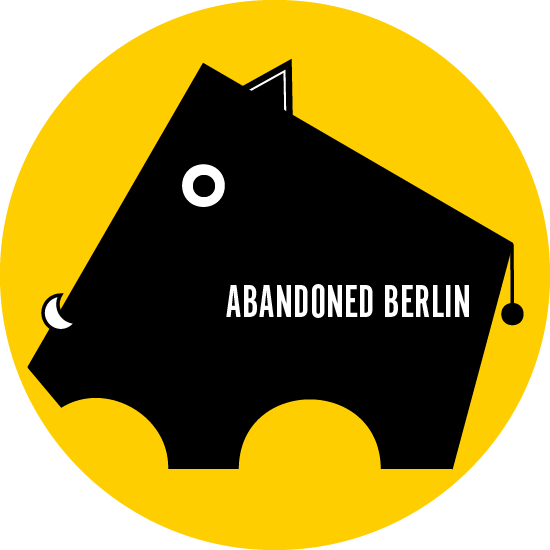
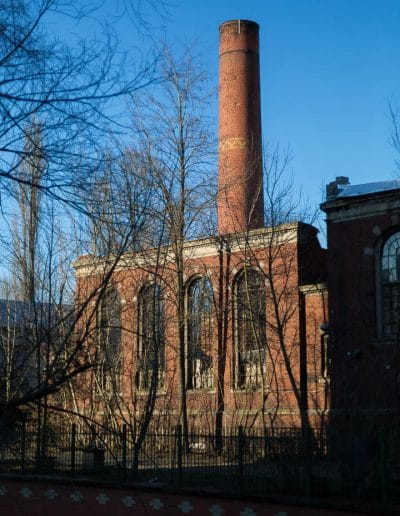

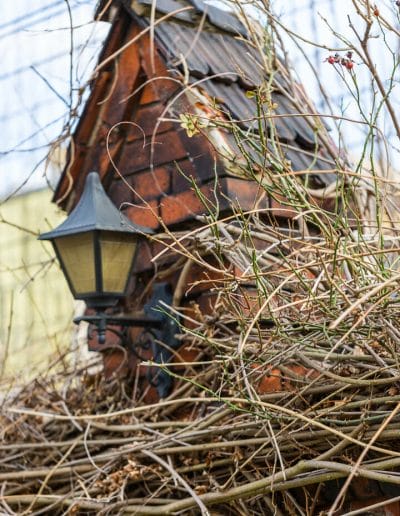
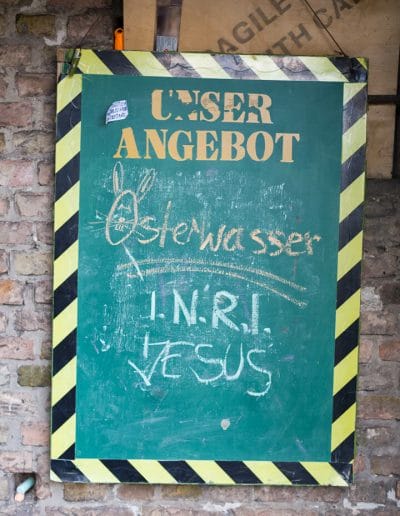
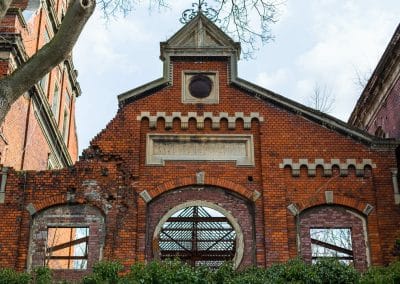
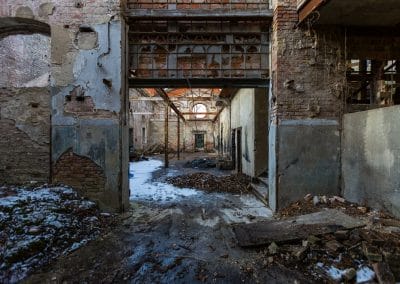
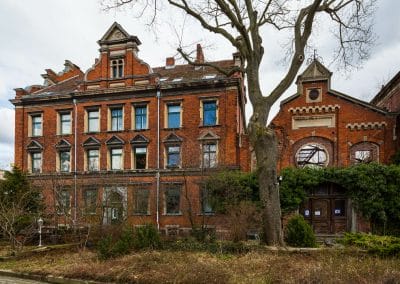

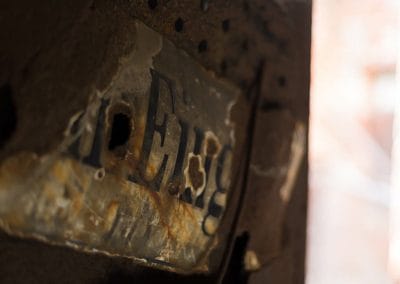
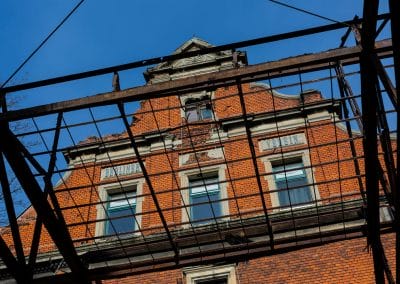
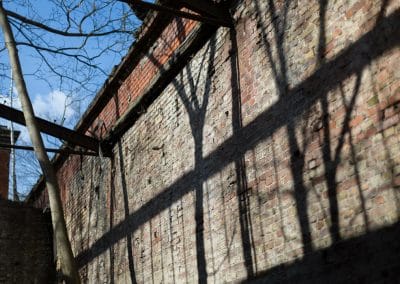
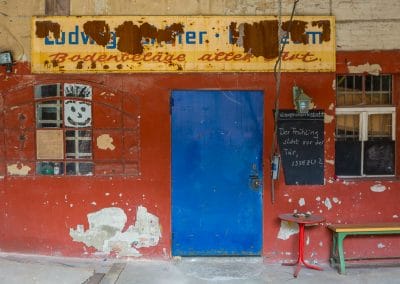
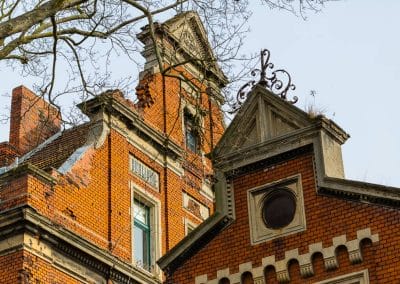
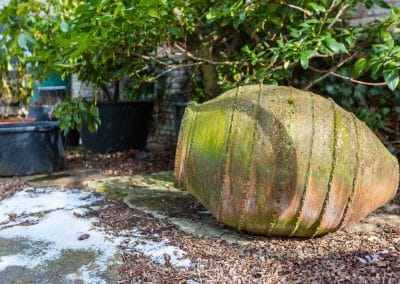

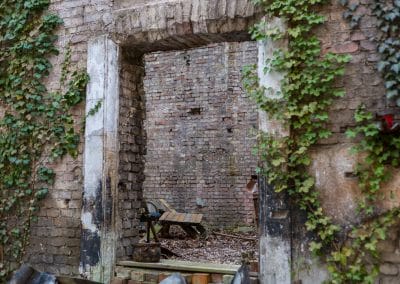

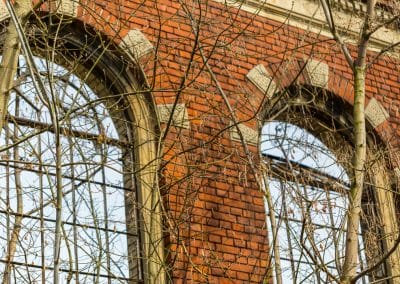
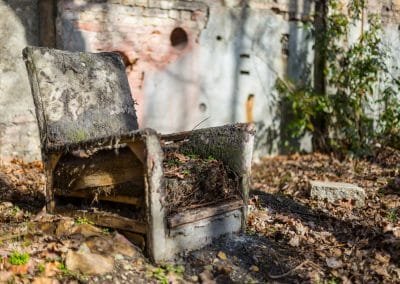


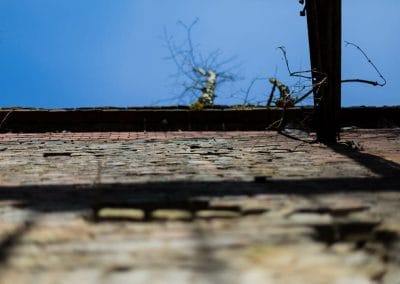
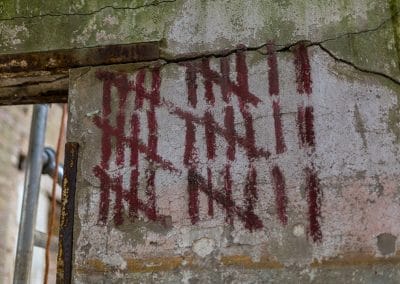
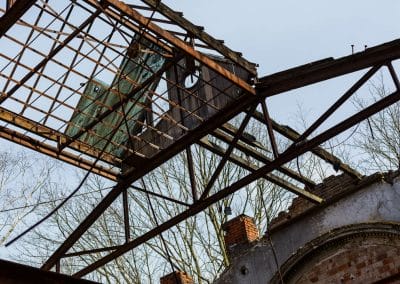
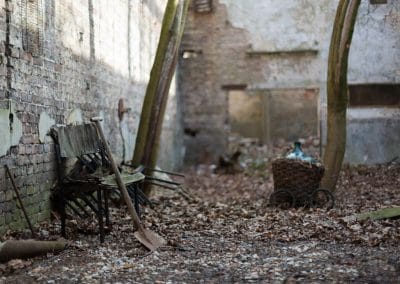
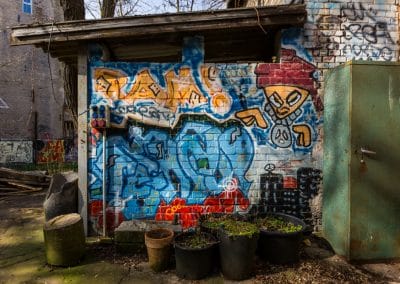
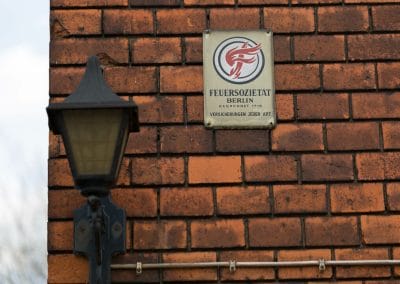

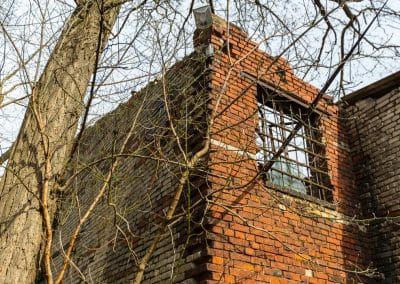

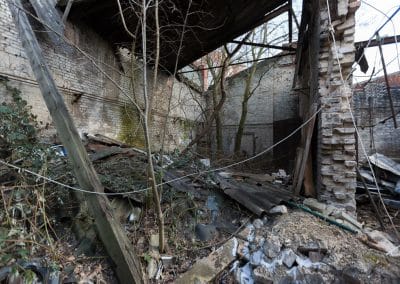
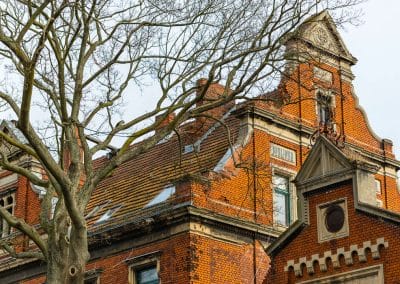
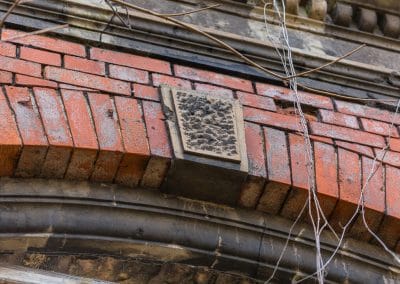
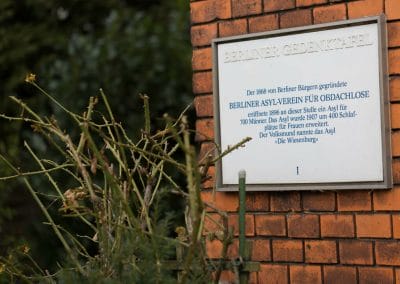
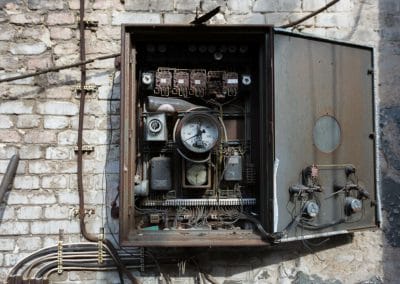
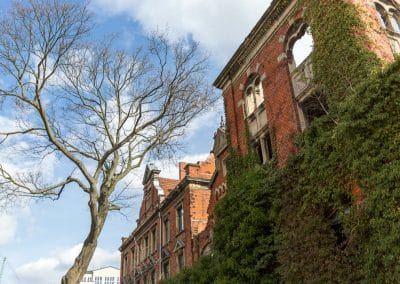
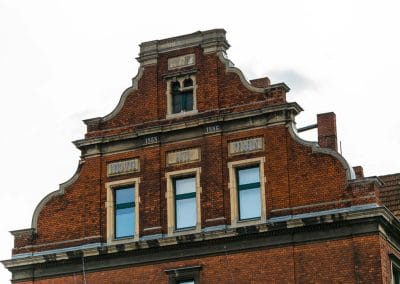

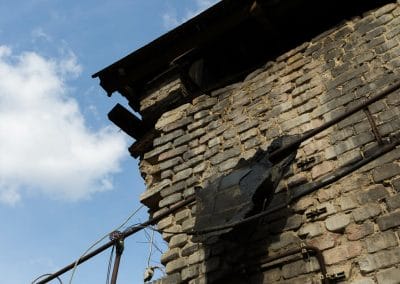

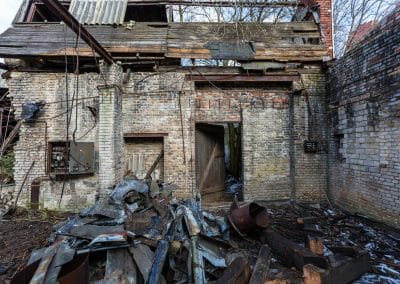

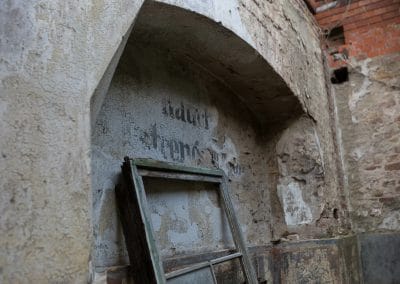
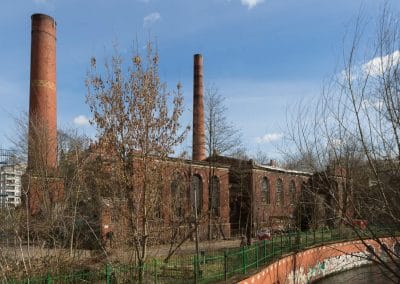
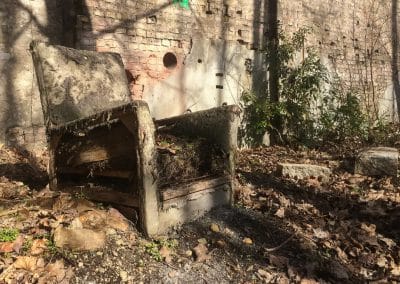


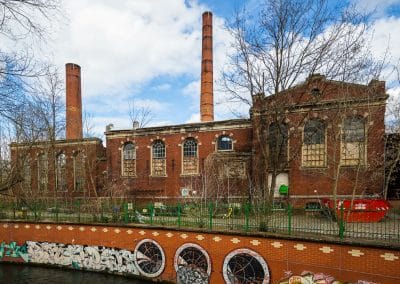
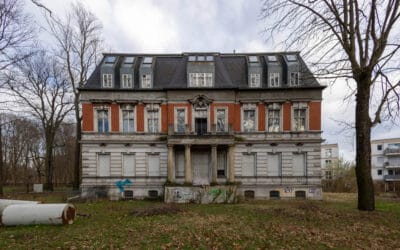

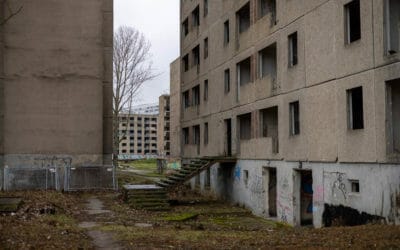
Does that mean you can only walk through the place if you books a tour? So basically it’s not abandoned?! I’d like to visit, but I don’t want a tour. I want the abandoned experience if you know what I mean. 🙁
Still active?
it is sad. but imagine if it was open for anyone to pass through, then it would become a common used hang out place, and the beauty of the ruin overgrown with nature would dissapear, also the animals living there, mostly bats and birds, would too.
My great grandfather stayed here after escaping the Cossacks in Poland, early 1900s.
Wow! Would love to hear more!
apartments have now been built. a small part has been refurbished into offices. the artist’s buildings are still there, mainly unrenovated